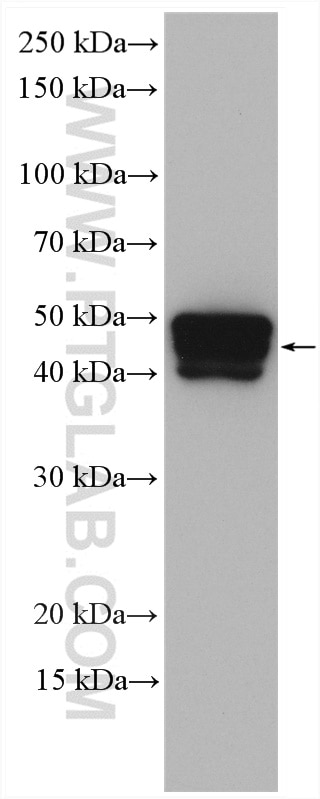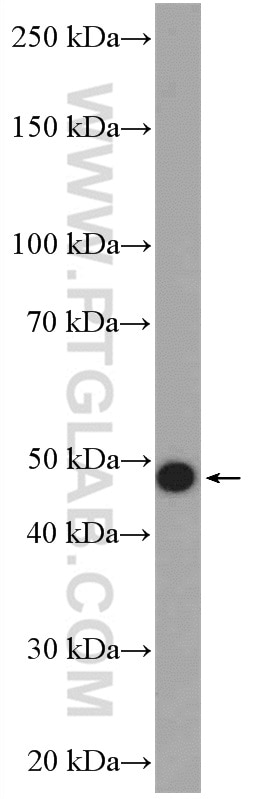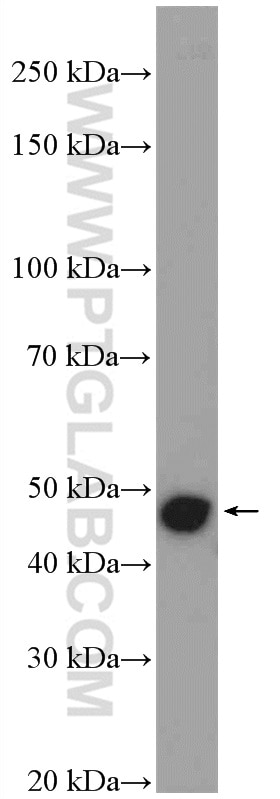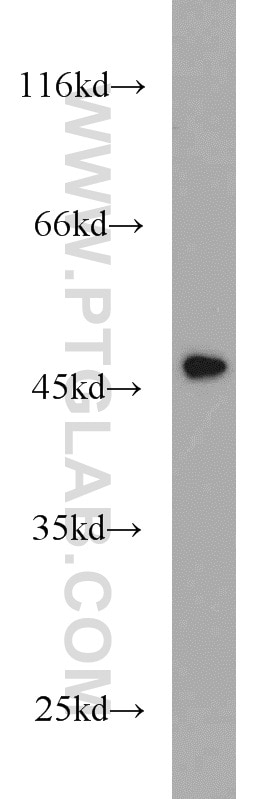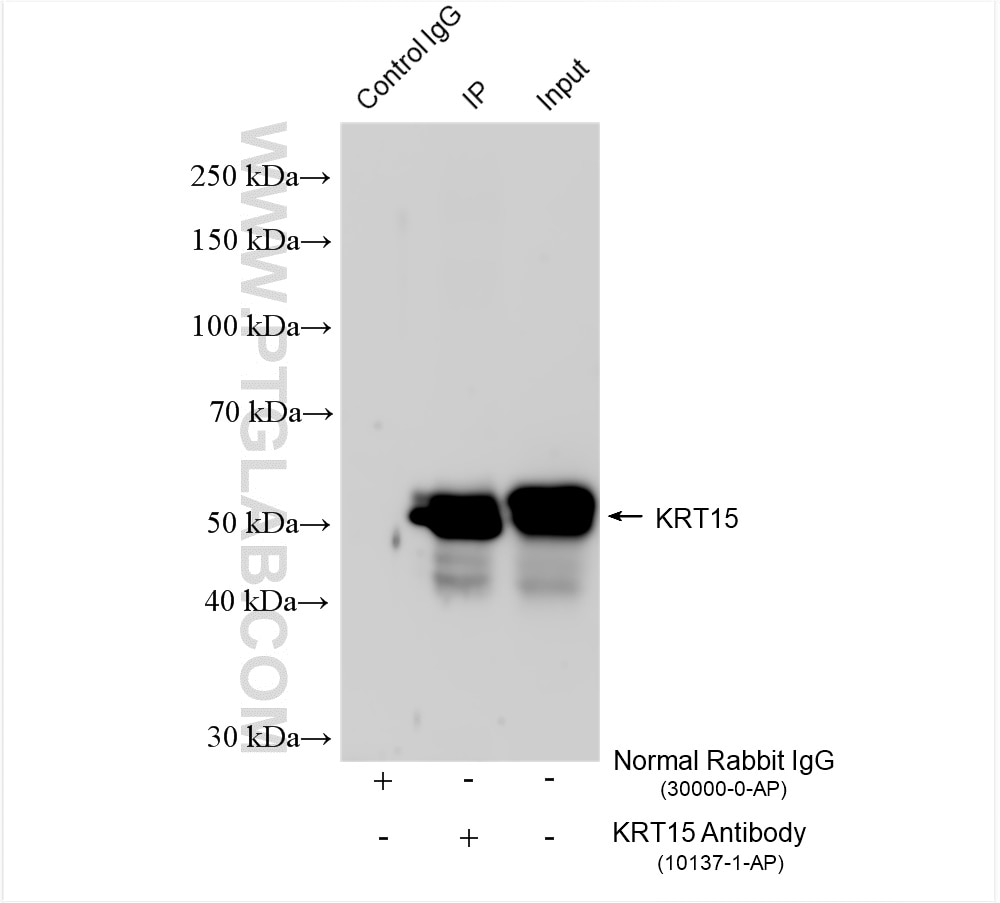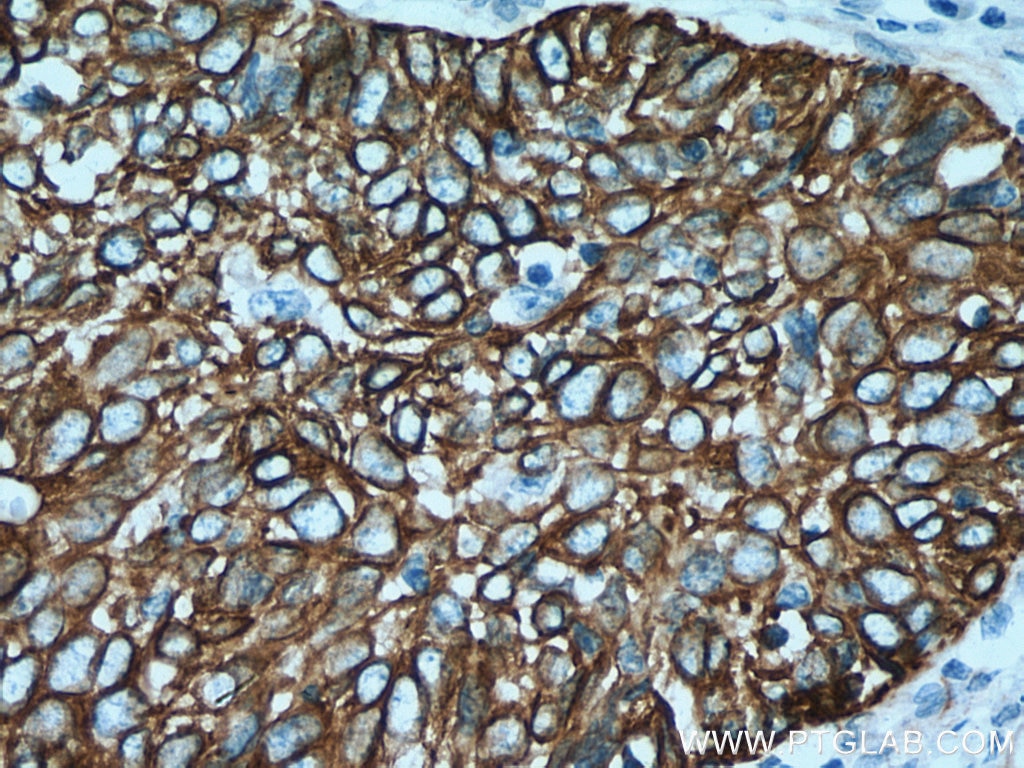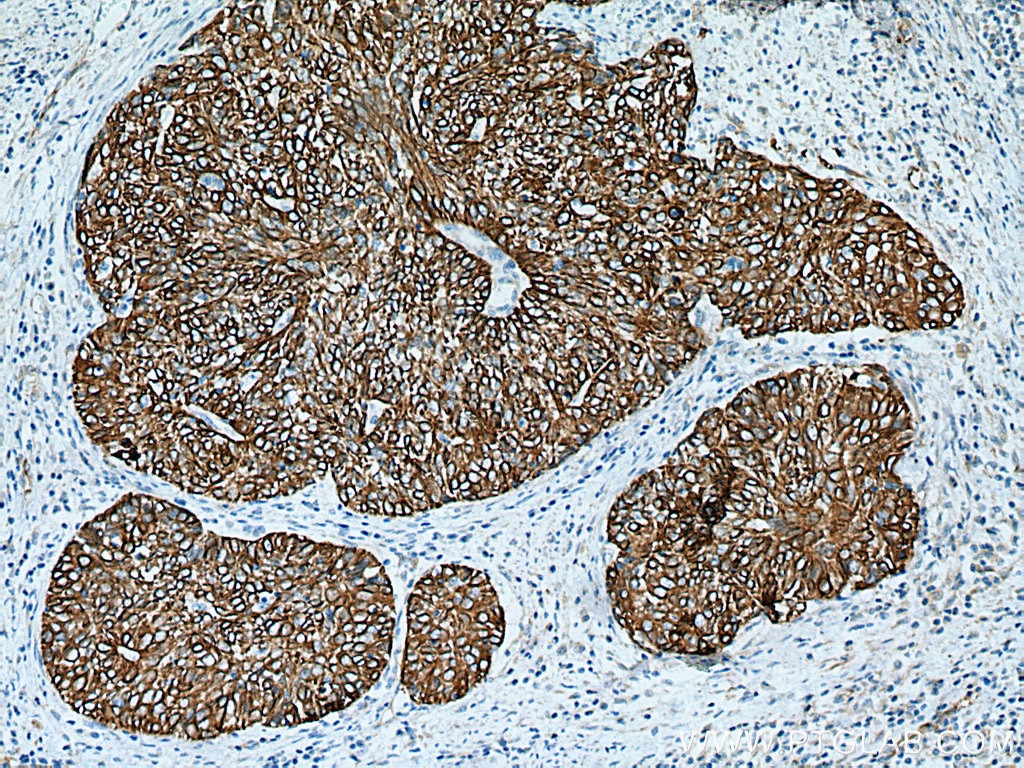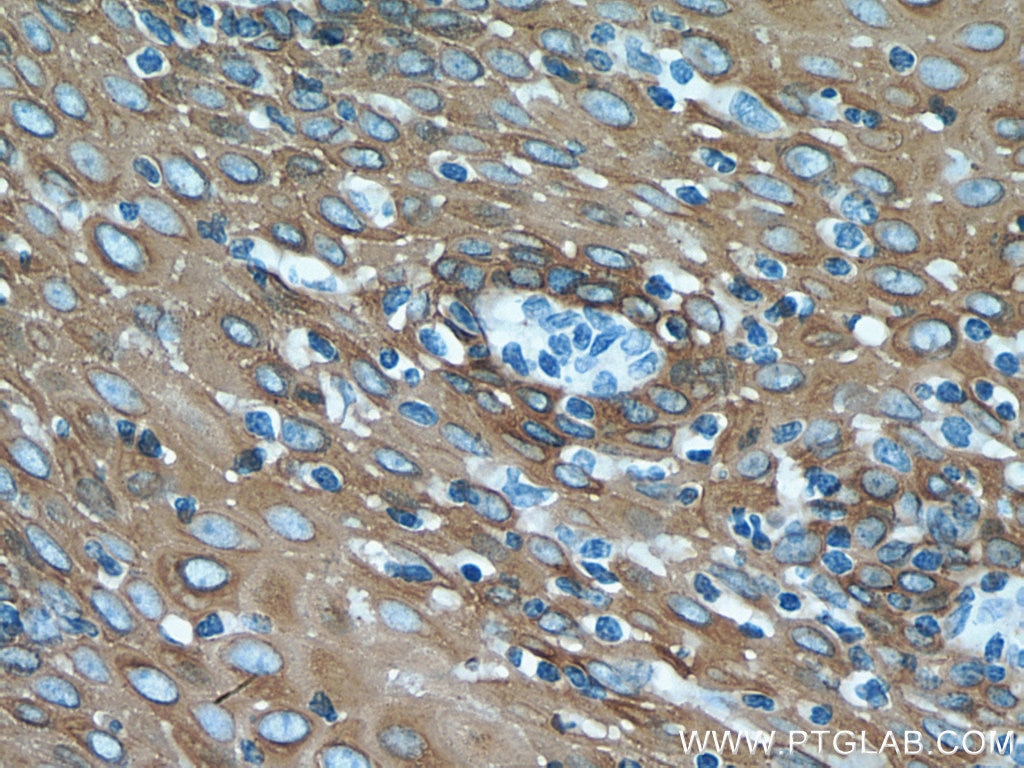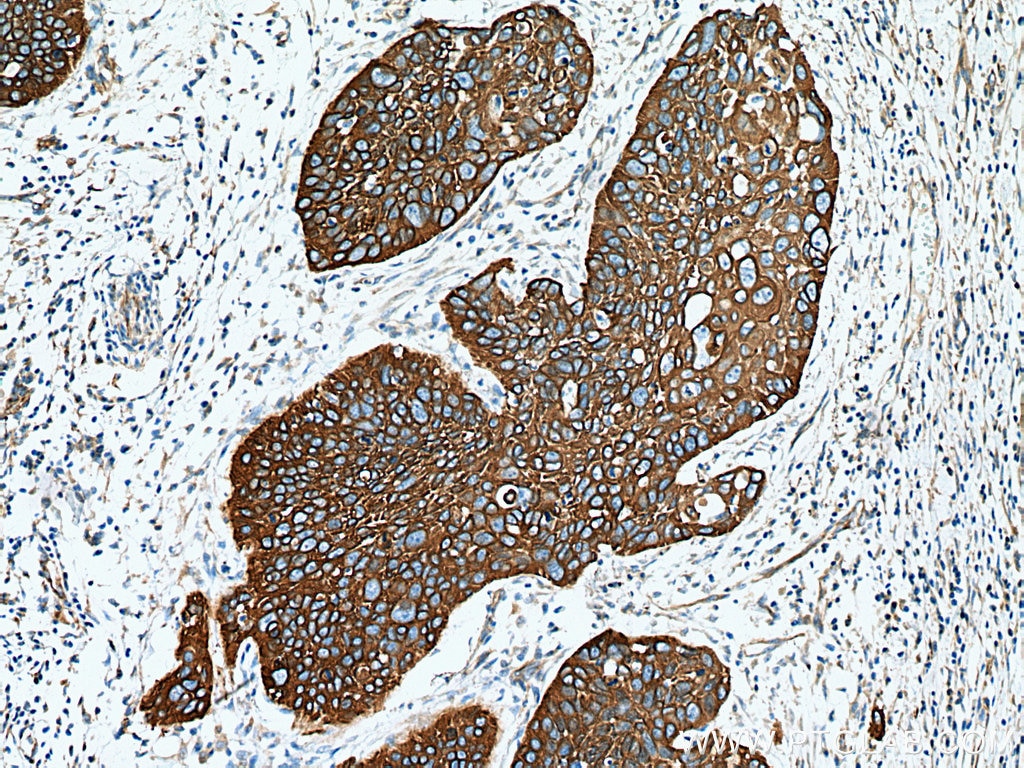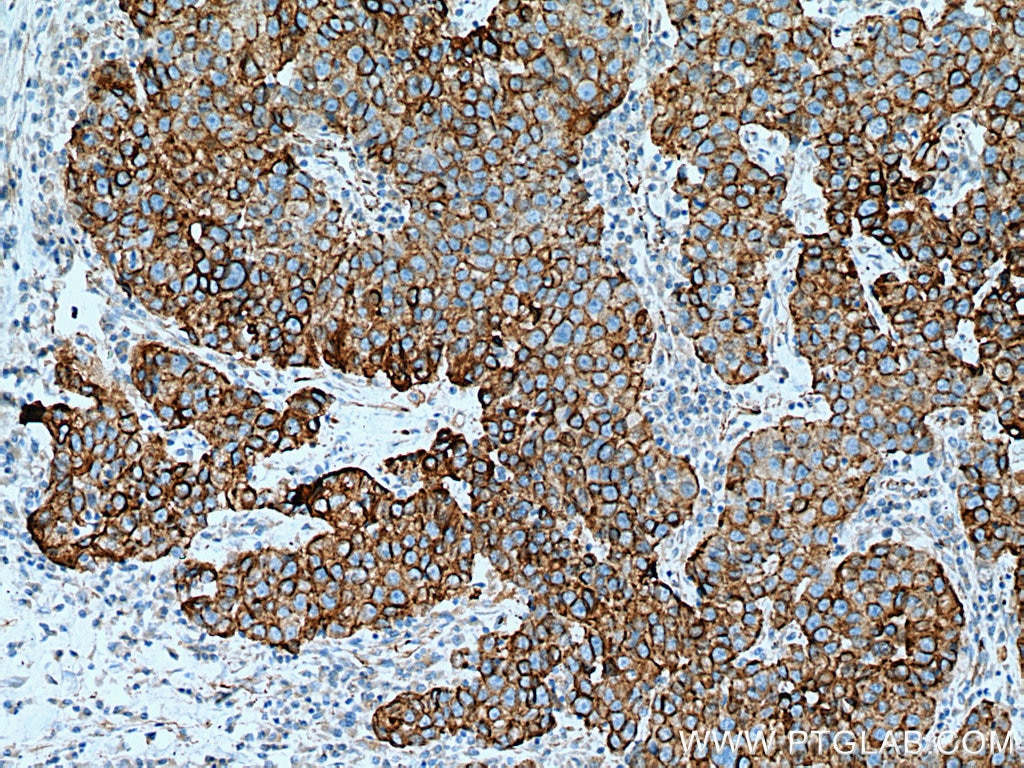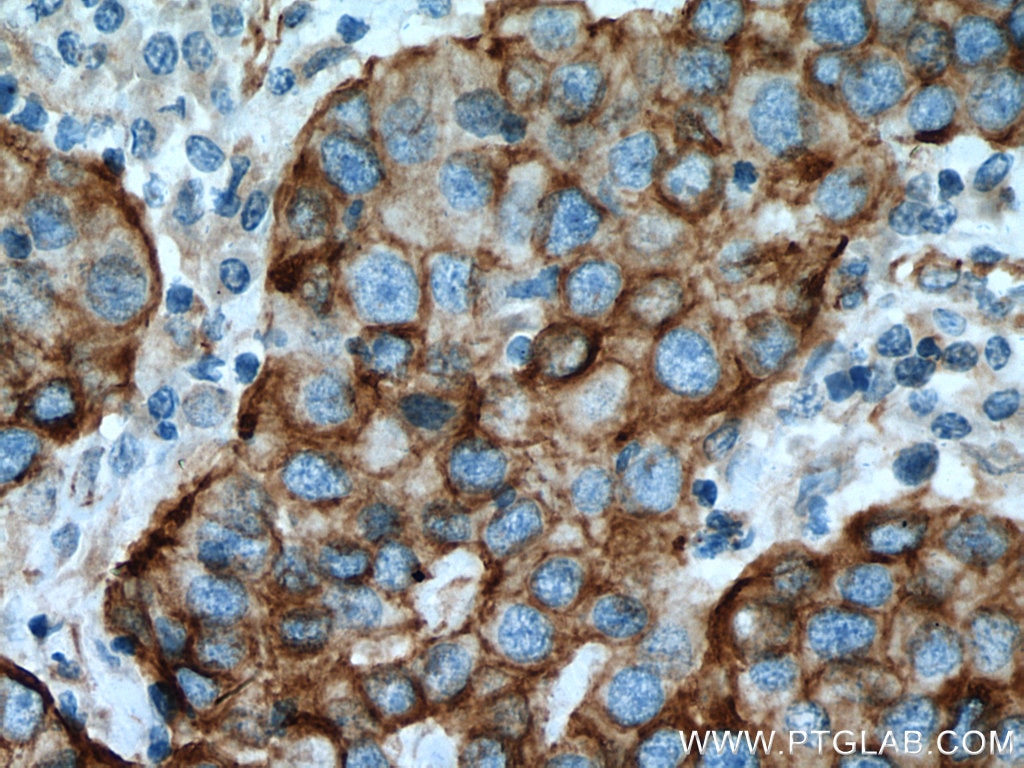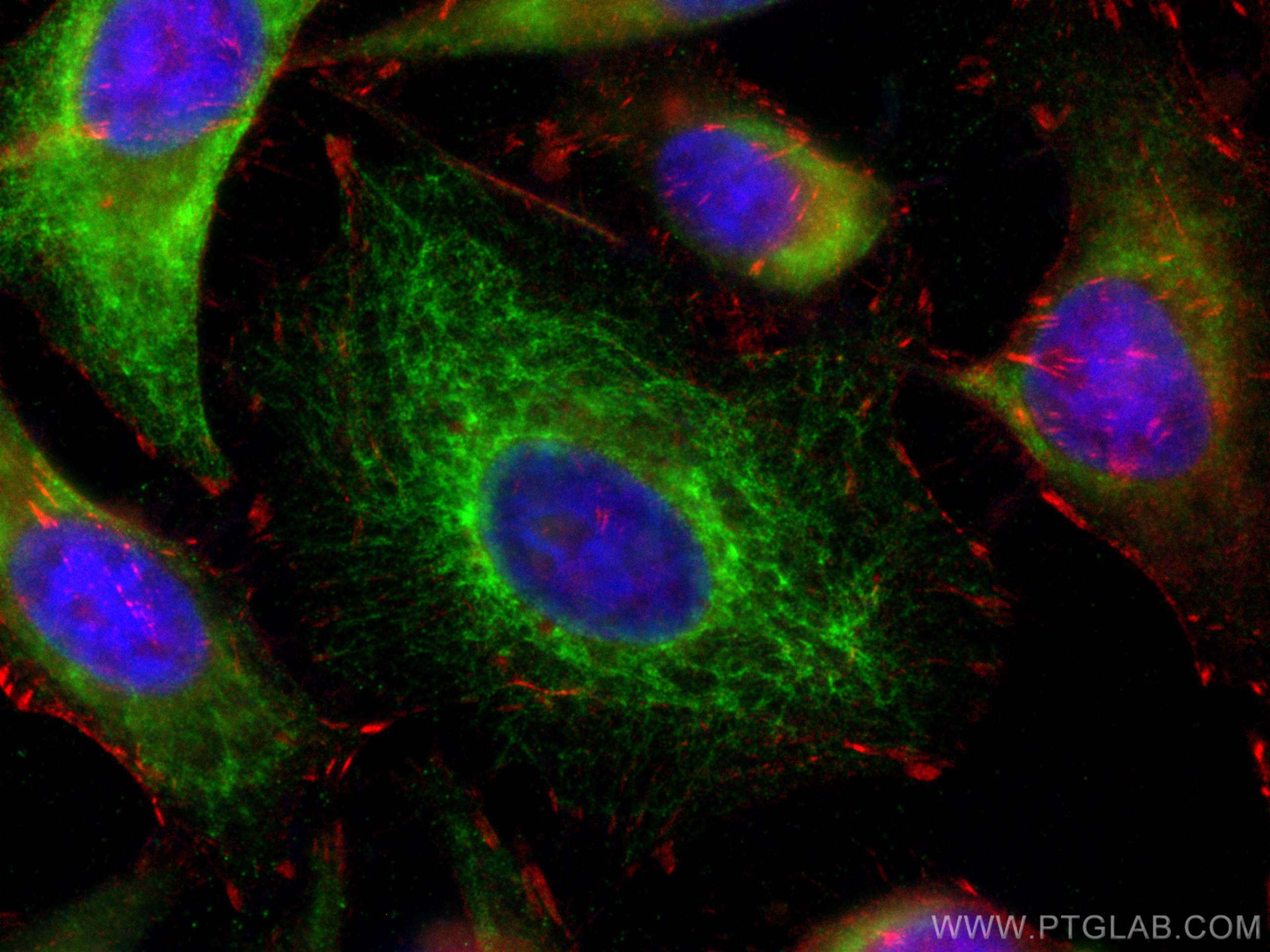Anticorps Polyclonal de lapin anti-Cytokeratin 15
Cytokeratin 15 Polyclonal Antibody for WB, IHC, IF/ICC, IP, ELISA
Hôte / Isotype
Lapin / IgG
Réactivité testée
Humain et plus (2)
Applications
WB, IHC, IF/ICC, IP, ELISA
Conjugaison
Non conjugué
N° de cat : 10137-1-AP
Synonymes
Galerie de données de validation
Applications testées
| Résultats positifs en WB | cellules A431, cellules HeLa, cellules PC-3, tissu de thymus de souris |
| Résultats positifs en IP | cellules A431, |
| Résultats positifs en IHC | tissu de cancer du col de l'utérus humain, tissu de cancer de l'œsophage humain, tissu de cancer du sein humain il est suggéré de démasquer l'antigène avec un tampon de TE buffer pH 9.0; (*) À défaut, 'le démasquage de l'antigène peut être 'effectué avec un tampon citrate pH 6,0. |
| Résultats positifs en IF/ICC | cellules HeLa, |
Dilution recommandée
| Application | Dilution |
|---|---|
| Western Blot (WB) | WB : 1:2000-1:10000 |
| Immunoprécipitation (IP) | IP : 0.5-4.0 ug for 1.0-3.0 mg of total protein lysate |
| Immunohistochimie (IHC) | IHC : 1:400-1:1600 |
| Immunofluorescence (IF)/ICC | IF/ICC : 1:50-1:500 |
| It is recommended that this reagent should be titrated in each testing system to obtain optimal results. | |
| Sample-dependent, check data in validation data gallery | |
Applications publiées
| WB | See 2 publications below |
| IHC | See 7 publications below |
| IF | See 10 publications below |
Informations sur le produit
10137-1-AP cible Cytokeratin 15 dans les applications de WB, IHC, IF/ICC, IP, ELISA et montre une réactivité avec des échantillons Humain
| Réactivité | Humain |
| Réactivité citée | rat, Humain, souris |
| Hôte / Isotype | Lapin / IgG |
| Clonalité | Polyclonal |
| Type | Anticorps |
| Immunogène | Cytokeratin 15 Protéine recombinante Ag0185 |
| Nom complet | keratin 15 |
| Masse moléculaire calculée | 49 kDa |
| Poids moléculaire observé | 49 kDa |
| Numéro d’acquisition GenBank | BC002641 |
| Symbole du gène | KRT15 |
| Identification du gène (NCBI) | 3866 |
| Conjugaison | Non conjugué |
| Forme | Liquide |
| Méthode de purification | Purification par affinité contre l'antigène |
| Tampon de stockage | PBS with 0.02% sodium azide and 50% glycerol |
| Conditions de stockage | Stocker à -20°C. Stable pendant un an après l'expédition. L'aliquotage n'est pas nécessaire pour le stockage à -20oC Les 20ul contiennent 0,1% de BSA. |
Informations générales
Keratins are a large family of proteins that form the intermediate filament cytoskeleton of epithelial cells, which are classified into two major sequence types. Type I keratins are a group of acidic intermediate filament proteins, including K9-K23, and the hair keratins Ha1-Ha8. Type II keratins are the basic or neutral courterparts to the acidic type I keratins, including K1-K8, and the hair keratins, Hb1-Hb6. Keratin 15 is a type I cytokeratin. It is found in some progenitor basal cells within complex epithelia.
Protocole
| Product Specific Protocols | |
|---|---|
| WB protocol for Cytokeratin 15 antibody 10137-1-AP | Download protocol |
| IHC protocol for Cytokeratin 15 antibody 10137-1-AP | Download protocol |
| IF protocol for Cytokeratin 15 antibody 10137-1-AP | Download protocol |
| IP protocol for Cytokeratin 15 antibody 10137-1-AP | Download protocol |
| Standard Protocols | |
|---|---|
| Click here to view our Standard Protocols |
Publications
| Species | Application | Title |
|---|---|---|
Biomater Sci A hybrid hydrogel composed of chitin and β-glucan for the effective management of wound healing and scarring | ||
Carcinogenesis Survival Of Skin Cancer Stem Cells Requires The Ezh2 Polycomb Group Protein. | ||
J Ethnopharmacol Dahuang-Gancao Decoction Ameliorates Testosterone-Induced Androgenetic Alopecia in Mice | ||
Sci Rep Characterization of slow cycling corneal limbal epithelial cells identifies putative stem cell markers. |
